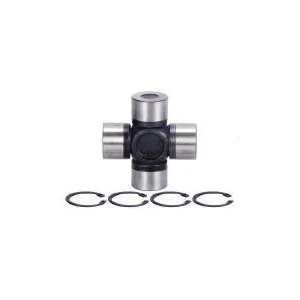Product Description
Automotive joint crosses, also known as universal joints or U-joints, are crucial components used in the drivetrain system of vehicles. They facilitate the transfer of torque between shafts that are not aligned with each other, allowing for smooth power transmission even when the shafts are at different angles.
FAQs:
Q: What is the purpose of automotive joint crosses?
A: Automotive joint crosses serve as a mechanical coupling between two shafts that are misaligned or positioned at an angle to each other. They enable torque to be transmitted from one shaft to another without loss of power, even when the shafts are not in a straight line.
Q: Where are automotive joint crosses typically used?
A: Joint crosses are commonly found in various parts of a vehicle, including the driveshaft, propeller shaft, and half shafts. They are essential in transmitting torque from the engine to the wheels, allowing the vehicle to move efficiently and smoothly.
Q: How do automotive joint crosses work?
A: Joint crosses consist of a cross-shaped body with four bearing cups, each containing needle roller bearings. These bearings allow for the smooth rotation of the cross, compensating for the misalignment between the input and output shafts. As the input shaft rotates, the joint cross transfers the rotational motion to the output shaft.
Q: What are the types of automotive joint crosses?
A: There are various types of joint crosses, including single joint crosses, double joint crosses, and constant velocity (CV) joint crosses. Single joint crosses are commonly used in rear-wheel drive vehicles, while double joint crosses are used in front-wheel drive vehicles. CV joint crosses are utilized in vehicles where a constant velocity of the output shaft is required, such as front-wheel drive cars with independent suspension.
Q: How important are automotive joint crosses for vehicle performance?
A: Automotive joint crosses play a critical role in the drivetrain system of a vehicle. They ensure smooth power transmission, absorb vibrations, and allow for flexibility in the driveline. Proper functioning of joint crosses is crucial for maintaining vehicle performance, efficiency, and reducing wear and tear on other drivetrain components.
Q: Do automotive joint crosses require maintenance?
A: Joint crosses are typically sealed and lubricated during manufacturing. However, over time, the lubrication may degrade, and the joints may require maintenance or replacement if they become worn or damaged. Regular inspection and maintenance of the drivetrain system, including the joint crosses, are important to ensure optimal performance and longevity.

